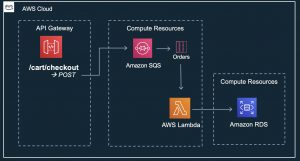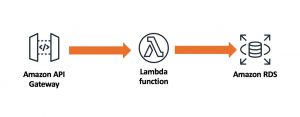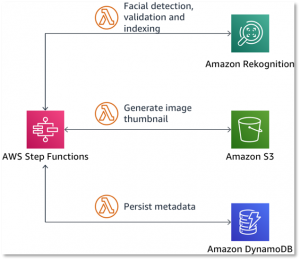AWS Architecture Blog
Top 10 Architecture Blog Posts of 2019
September 8, 2021: Amazon Elasticsearch Service has been renamed to Amazon OpenSearch Service. See details.
As we wind our way toward 2020, I want to take a moment to first thank you, our readers, for spending time on our blog. We grew our audience quite a bit this year and the credit goes to our hard-working Solutions Architects and other blog post writers. Below are the top 10 Architecture blog posts written in 2019.
#10: How to Architect APIs for Scale and Security
by George Mao
George Mao, a Specialist Solutions Architect at AWS, focuses on serverless computing and has FIVE posts in the top ten this year. Way to go, George!
This post was the first in a series that focused on best practices and concepts you should be familiar with when you architect APIs for your applications.
Read George’s post.
#9: From One to Many: Evolving VPC Guidance
by Androski Spicer
Since its inception, the Amazon Virtual Private Cloud (VPC) has acted as the embodiment of security and privacy for customers who are looking to run their applications in a controlled, private, secure, and isolated environment.
This logically isolated space has evolved, and in its evolution has increased the avenues that customers can take to create and manage multi-tenant environments with multiple integration points for access to resources on-premises.
Read Androski’s post.
#8: Things to Consider When You Build REST APIs with Amazon API Gateway
by George Mao
This post dives deeper into the things an API architect or developer should consider when building REST APIs with Amazon API Gateway.
Read George’s post.
#7: How to Design Your Serverless Apps for Massive Scale
by George Mao
Serverless is one of the hottest design patterns in the cloud today, allowing you to focus on building and innovating, rather than worrying about the heavy lifting of server and OS operations. In this series of posts, we’ll discuss topics that you should consider when designing your serverless architectures. First, we’ll look at architectural patterns designed to achieve massive scale with serverless.
Read George’s post.
#6: Best Practices for Developing on AWS Lambda
by George Mao
One of the benefits of using Lambda, is that you don’t have to worry about server and infrastructure management. This means AWS will handle the heavy lifting needed to execute your AWS Lambda functions. Take advantage of this architecture with the tips in this post.
Read George’s post.
#5: Stream Amazon CloudWatch Logs to a Centralized Account for Audit and Analysis
by David Bailey
A key component of enterprise multi-account environments is logging. Centralized logging provides a single point of access to all salient logs generated across accounts and regions, and is critical for auditing, security and compliance. While some customers use the built-in ability to push Amazon CloudWatch Logs directly into Amazon Elasticsearch Service for analysis, others would prefer to move all logs into a centralized Amazon Simple Storage Service (Amazon S3) bucket location for access by several custom and third-party tools. In this blog post, David Bailey will show you how to forward existing and any new CloudWatch Logs log groups created in the future to a cross-account centralized logging Amazon S3 bucket.
Read David’s post.
#4: Updates to Serverless Architectural Patterns and Best Practices
by Drew Dennis
Drew wrote this post at about the halfway point between re:Invent 2018 and re:Invent 2019, where he revisited some of the recent serverless announcements we’ve made. These are all complimentary to the patterns discussed in the re:Invent architecture track’s Serverless Architectural Patterns and Best Practices session.
Read Drew’s post.
#3: Understanding the Different Ways to Invoke Lambda Functions
by George Mao
In George’s first post of this series (#7 on this list), he talked about general design patterns to enable massive scale with serverless applications. In this post, he’ll review the different ways you can invoke Lambda functions and what you should be aware of with each invocation model.
Read George’s post.
#2: Using API Gateway as a Single Entry Point for Web Applications and API Microservices
by Anandprasanna Gaitonde and Mohit Malik
In this post, Anand and Mohit talk about a reference architecture that allows API Gateway to act as single entry point for external-facing, API-based microservices and web applications across multiple external customers by leveraging a different subdomain for each one.
Read Anand’s and Mohit’s post.
#1: 10 Things Serverless Architects Should Know
by Justin Pirtle
Building on the first three parts of the AWS Lambda scaling and best practices series where you learned how to design serverless apps for massive scale, AWS Lambda’s different invocation models, and best practices for developing with AWS Lambda, Justin invited you to take your serverless knowledge to the next level by reviewing 10 topics to deepen your serverless skills.
Read Justin’s post.
Thank You
Thanks again to all our readers and blog post writers. We look forward to learning and building amazing things together in the coming year.










